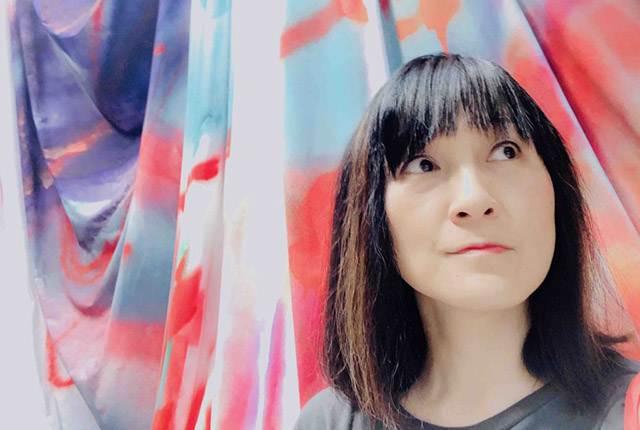Weekly Conversations… with Hitomi Hasegawa (Curator in Residence 2018)

For this edition, we’ve invited our current Curator in Residence Hitomi Hasegawa. 150 years of diplomatic relations between Austria and Japan give reason for this project, that combines a curatorial residency and an exhibition at das weisse haus in spring 2019 that refers to these bilateral relations.
You’ve already spent one month in Vienna. Could you tell us more about your impressions so far?
I have an impression that das weisse haus always holds challenging and thought-provoking exhibitions. However, I was not familiar with the resident artists and studio artists until the studio visits last month. I was impressed that all the studio artists are interesting. Each artist has a unique artistic practice and uses a different medium, and the outputs seem to be very professional and high standard. I am happy to get to know them and enjoyed talking with them.
What is the focus of your curatorial work and which topics do you mainly deal with?
These years I often work with Asian artists, including Myanmar, Cambodia, China, Korea, Singapore, Taiwan, Hong Kong, Malaysia, Vietnam and Japan. I had to think what is Asia, and all those different histories and how they are related to West through the decolonisation and modernisation. The theme relates to the subject of the call for proposals by studio das weisse haus that I got an interest.
I work with several topics, for example, my latest project in Hong Kong was about the narrative discourse of Japanese animation/comic/game, so-called “sekaikei”, and how it could be adopted to contemporary visual art. I think the sekaikei discourse is interesting because it is mutually exclusive with the socially engaged art, which is dominant in contemporary art these years.
Another exhibition, “Gender Genitor Genitalia” consists of twelve artists from Japan and Hong Kong. As the title suggests, this is about feminism. The exhibition inspired by the case of a Japanese artist arrested because she exhibited the works of art reshaping her vagina in 2015.
Could you give us a brief idea about your upcoming exhibition project in das weisse haus?
The given subject is 150 years of diplomatic relations between Austria and Japan. The initial idea was about the absurdity behind love and passion to the foreign culture, exemplifying the Japanese pavilion of the Vienna World Expo in 1873 and the Rokumeikan that the symbol of Westernization in Japan. If you research these two matters, you would know how diplomatic relations and the peace treaty of Austria and Japan in 1869 are historically related to these.
Now I am still working on the selection. However, looking at the line-up of confirmed artworks, the exhibition will be more serious one like conjuring up the forgotten narratives and ghosts from the late 19th century. In this way, it could also be fascinating to see how contemporary Austrian and Japanese artists explore the history and historical objects, how they look Others, interpreted or just juxtaposed in their works of art.
Interview: Fiona Hauser
